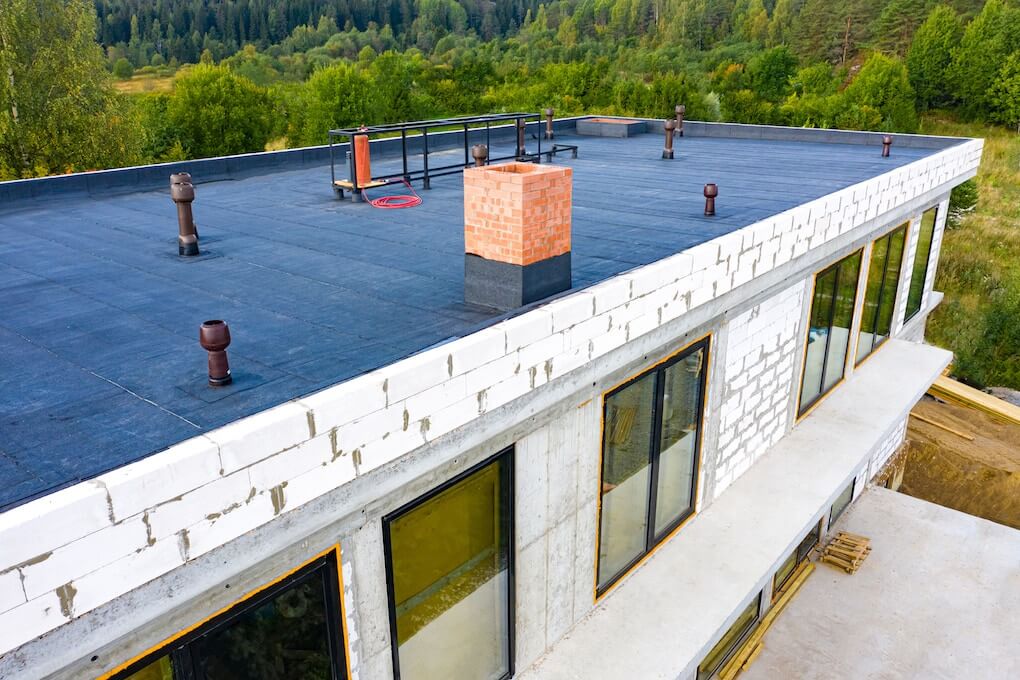Flat roofs, despite their name, usually have a slight slope to ensure water drainage. Often found in modern buildings and commercial establishments, flat roofs offer both aesthetic appeal and functionality. However, just like any other roofing type, there comes a time when the age or damage necessitates a replacement. If you’re on the brink of a Flat Roof Replacement, this guide offers insightful tips to ensure a hassle-free project.
Recognize When It’s Time
The first step in any Flat Roof Replacement is acknowledging the need. Here are some clear indicators:
- Persistent Leaks: If your roof is continuously causing damp spots inside, it might be time for an overhaul.
- Blistering or Bubbling: This can suggest trapped moisture and is a precursor to more significant issues.
- Age: If your roof is nearing the end of its expected lifespan, proactive replacement can prevent unexpected problems.
Understand the Flat Roof Types
There are various materials and methods available for flat roofing. Familiarizing yourself with them can aid your decision-making:
- Built-Up Roof (BUR): This involves multiple layers of bitumen (asphalt) interspersed with reinforcing fabrics, topped with a layer of aggregate like gravel.
- Modified Bitumen: Similar to BUR but uses a more advanced material with modifiers added for enhanced elasticity and strength.
- EPDM (Rubber Roofing): Made from a synthetic rubber material, it’s both durable and flexible.
- PVC and TPO Roofing: These are single-ply membranes, known for their strength and energy efficiency.
Consider Insulation
When proceeding with a Flat Roof Replacement, it’s an opportune time to evaluate and possibly upgrade your insulation.
- Energy Efficiency: Good insulation can significantly decrease your heating and cooling bills.
- Roof Longevity: Proper insulation can prevent ice dams and other moisture-related problems, extending your roof’s lifespan.
Ensure Proper Drainage
One of the main challenges with flat roofs is water pooling. Make sure your new roof addresses this:
- Slight Slope: Even flat roofs should have a minimal gradient to guide water towards drainage points.
- Drain Placement: Ensure drains are adequately placed, clear of debris, and of sufficient size.
The Importance of Hiring Experienced Professionals for Flat Roof Replacement
Engaging in a Flat Roof Replacement is a significant investment, both in terms of time and finances. It’s a task that demands precision, skill, and a deep understanding of materials and methods. One of the primary determinants of the success and longevity of your new roof is the expertise of the professionals you hire. Here’s a closer look at why hiring experienced professionals is crucial.
- Complexity of Installation: Unlike pitched roofs, flat roofs have their unique set of challenges. They require a specific installation technique to ensure proper drainage and prevent water pooling, a common problem in flat roofs.
- Material Knowledge: There are various materials available for flat roofing, from Built-Up Roofing (BUR) to EPDM (Rubber Roofing) and Modified Bitumen. Experienced professionals are well-versed with the nuances of each material, ensuring optimal application and longevity.
- Avoidance of Common Mistakes: A seasoned roofer knows the common pitfalls and challenges associated with flat roofs, from ensuring no air bubbles in the roofing membrane to properly sealing seams.
Weather Matters
The replacement should be scheduled during a time when the weather is expected to be dry and moderate.
- Dry Conditions: Wet conditions can compromise the adhesive processes critical in flat roofing.
- Temperature: Extremely cold or hot weather can affect the materials and installation quality.
Consider Roof Access
Given the flat structure, these roofs are often utilized more than sloped ones. Think about how you’ll use your roof:
- Decking or Green Roof: If you plan to use your roof as a recreational area or garden, ensure the material and construction support this.
- Equipment Access: For commercial buildings, consider how HVAC systems or other utilities will be accessed and serviced.
Regular Maintenance Post-Replacement
Once your Flat Roof Replacement is complete, maintaining it is key to ensuring its longevity:
- Regular Inspections: This helps in early detection of potential problems.
- Clean Debris: Leaves, twigs, and other debris can clog drains and cause water pooling.
- Address Issues Promptly: If you spot any damage, attend to it immediately to prevent more significant problems.
Warranty and Documentation
Ensure you understand the warranty terms after your Flat Roof Replacement:
- Material vs. Workmanship Warranty: While material warranties cover potential defects in roofing materials, workmanship warranties pertain to installation errors.
- Keep Documentation: Store all replacement-related documents safely. They’ll be crucial for future reference or in case of any disputes.
Conclusion
A Flat Roof Replacement, while a significant undertaking, doesn’t have to be a daunting one. By being informed, proactive, and partnering with the right professionals, you can ensure that your new roof serves you efficiently for years to come. Whether you’re making the shift due to age or damage, the above tips will streamline your replacement process, guaranteeing optimal results.

